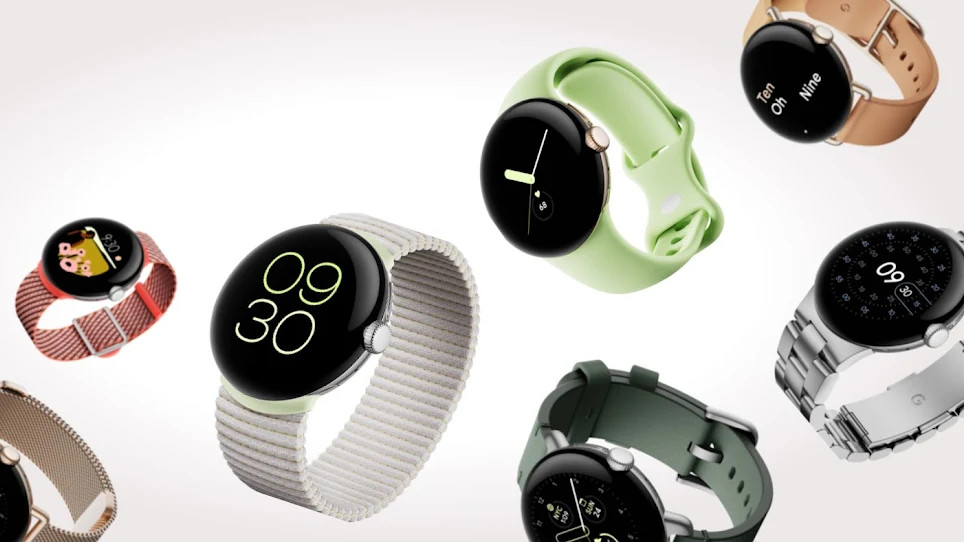
Update: Garmin has released several new watches in recent months, including the Forerunner 965 and Instinct Crossover, so we've refreshed this guide to make sure it's up to date.
Google unveiled its first smartwatch in October 2022, and it came equipped with some pretty impressive fitness credentials, but just how good is the Google Pixel Watch for hikers, and is there a chance that it might replace your Garmin watch for outdoor adventures?
The short answer is no, particularly if you're likely to be giving your watch some seriously rough treatment on crags and cliffs, but it you're not planning anything extreme then it's worth taking a moment to weigh up your options all the same.
Before we get started, it's important to note that the Google Pixel Watch is strictly for Android phone users, in much the same way that Apple Watches are exclusively compatible with iPhones. If you own an iPhone, check out our review of the new Apple Watch Ultra instead.
Build
Unlike most Garmin watches or the Apple Watch Ultra, the Google Pixel Watch isn't designed specifically with outdoor use in mind, In fact, Sandeep Waraich, director of product management for Pixel Watch, specifically advises against using it for sports like rock climbing where it's likely to take its share of knocks.
That's mostly due to its distinctive curved lens, which bends light so the AMOLED display appears to go right up the edge of the case. It looks great, but is vulnerable to damage.
Several Garmin watches also have AMOLED displays (including the Garmin Epix, Marq Adventurer (Gen 2), and Venu 2), but these are protected by a tough bezel to guard against knocks, and don't have the same curved shape.
All the latest inspiration, tips and guides to help you plan your next Advnture!
It's also worth noting that the Pixel Watch uses Corning Gorilla Glass rather than the sapphire crystal you'll find covering the face of most outdoor GPS watches. It's still a tough material that's not going to crack any time soon, but less resistant to scratches.
There'll be no diving, kiteboarding, or surfing with the Google Pixel Watch, either. It's rated to 5atm, which means it should be fine for swimming, handwashing, and general splashing, but shouldn't be subjected to anything more extreme. It's not rated for dust and shock resistance; this is no G-Shock alternative.

The case is made from 80% stainless steel, which should make it tougher than many smartwatches, which often use aluminum to keep weight to a minimum. Not at bulletproof as the fiber-reinforced resin of the Garmin Instinct series, but robust nonetheless, and undeniably more attractive.
The Pixel Watch has two physical controls: a large crown that projects from the right-hand edge of the case, with a small button above it. All other interactions are carried out using that rather nice touchscreen. My general attitude when it comes to buttons on watches is 'the more the merrier' (using a touchscreen while bouncing around mid-run is an exercise in frustration), but the crown looks nicely textured and should be easy enough to operate with clumsy cold or gloved fingers. If this and the button work in a logical way so you use key functions with the touchscreen temporarily disabled, it could be a winner.
Features
The Google Pixel Watch runs Google's own smartwatch operating system, Wear OS. This is already used by various smartwatches, including models by Mobvoi, Fossil, and Ticwatch, and gives you access to a pretty impressive range of apps from Google and third-party developers. You don't get as many options as you would with an Apple Watch, but there's much more choice than you'll get with Garmin's Connect IS store.
You'll get native support for key Google apps, including Google Maps. which should prove extremely handy for explorers (though of course we'd never recommend heading out without a map and compass). Google Assistant lets you issue voice commands so you can control the watch without taking off your winter mittens. Google Pay is more widely supported than its counterpart, Garmin Pay, and will let you make contactless purchases if you need to grab some supplies, or buy a well-earned coffee and cake at the end of your hike,
Tools like Gmail, Google Calendar, and support for other Google Pixel devices (including Pixel Buds headphones) are all welcome additions, but not top priorities for outdoor adventures.
Fitbit compatibility is built in, which is no surprise considering Google bought the brand fairly recently. Workout data will automatically sync with the Fitbit mobile app on your phone, where you'll be able to check all kinds of interesting insights into your health and fitness. The watch comes with a six-month trial of Fitbit Premium, which gives you access to more advanced metrics, plus instructor-led workouts and meditation sessions, and even recipes.

The watch can also estimate your VO2 Max, which can be a useful indicator of fitness for outdoor exploits, and it tracks heart rate variability (HRV) so you can see how your body is responding to everyday stresses and your current training level. You won't get the same type of training tools you do from a Garmin watch though; the Pixel Watch isn't designed to help you train for an ultra marathon or multi-day hike.
One feature that you'll hopefully never need, but is reassuring to have, is an SOS function that can automatically call emergency services if you take a hard fall. This is similar to Garmin Incident Detection, but GID sends a text message to an emergencu contact rather than calling 911 for you. You can also activate the Pixel Watch's SOS manually in an emergency if you find yourself cliffed out, or your hiking partner is injured. Fall detection isn't available just yet, but will come with a firmware update in a few months' time.
Connectivity
The Google Pixel Watch comes in two versions: one with only Bluetooth and Wi-Fi connectivity, and one that also lets you connect to the internet via a cellular plan. The latter will allow you to make calls, send text messages, and download/sync maps from your wrist, which could be very handy in the great outdoors (provided you're somewhere with network coverage. of course).
The Apple Watch Ultra has cellular connectivity as standard, but so far the Forerunner 945 LTE is the only Garmin watch to offer it.
Both versions have their own GPS module, so you don't need a constant Bluetooth connection to your phone in order to track your location and speed on hikes and trail runs, though it doesn't appear to be dual-band. NFC allows you to make contactless payments via Google Pay.
Battery life
Perhaps the biggest sticking point for many outdoor fitness enthusiasts will be the Pixel Watch's battery life, which is rated at just 24 hours. This is the same you'd expect from the Apple Watch Series 8 or SE, but much less than a typical GPS sports watch, If you're more of a day hiker then charging your watch daily might not be an issue, but campers and those who enjoy multi-day adventures will be better suited by a watch with a little less pizazz that keeps running for longer, such as the Garmin Instinct 2 Solar or Garmin Enduro.
Price
The Google Pixel Watch is available to pre-order now starting at $399.99, whis is the same as the Garmin Forerunner 745 triathlon watch. For comparison, the Apple Watch Ultra costs $799.
- Best GPS watches: find your ideal training tool

Cat is the editor of Advnture, She’s been a journalist for 15 years, and was fitness and wellbeing editor on TechRadar before joining the Advnture team in 2022. She’s a UK Athletics qualified run leader, and in her spare time enjoys nothing more than lacing up her shoes and hitting the roads and trails (the muddier, the better), usually wearing at least two sports watches.
